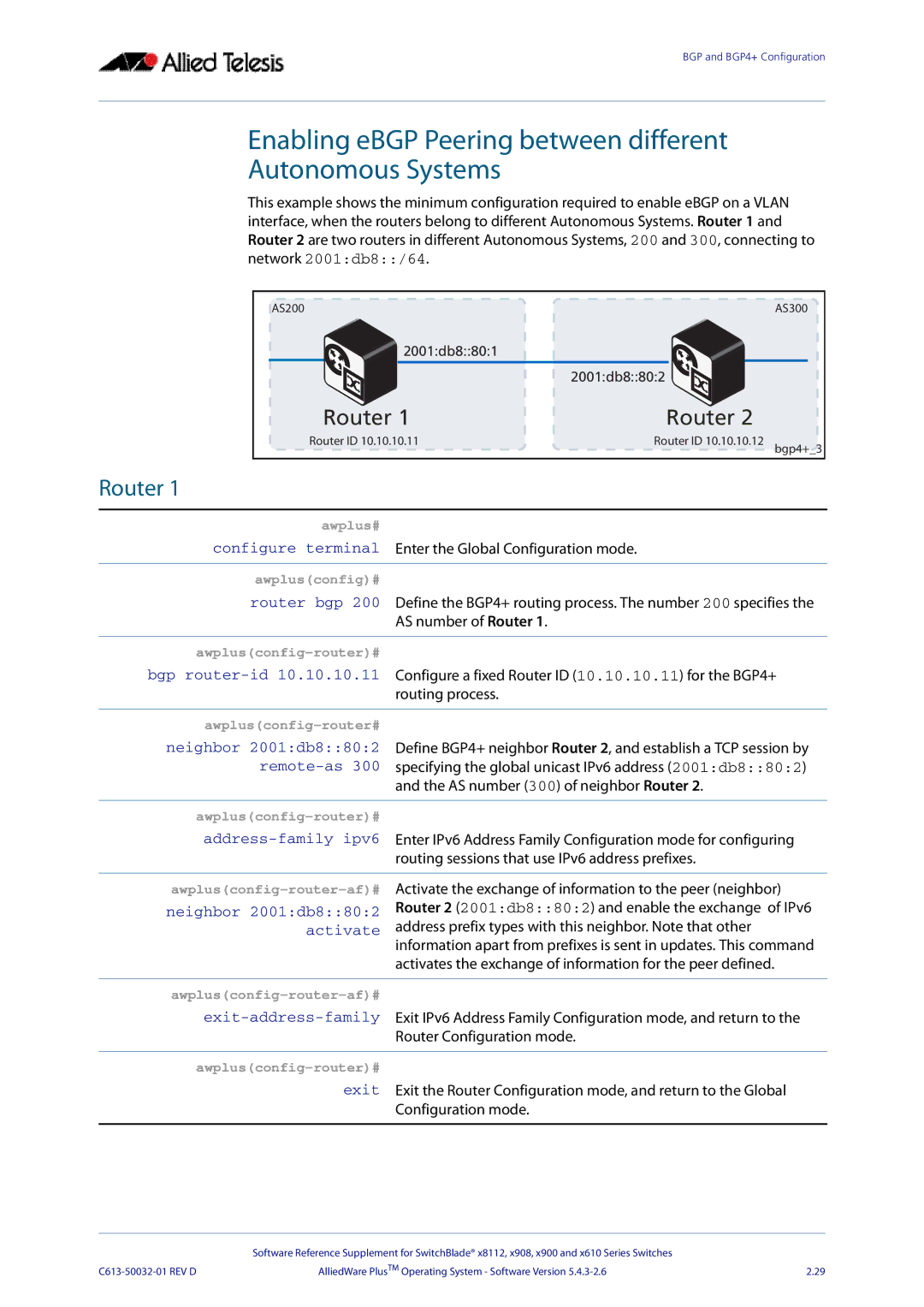
BGP and BGP4+ Configuration
Enabling eBGP Peering between different
Autonomous Systems
This example shows the minimum configuration required to enable eBGP on a VLAN interface, when the routers belong to different Autonomous Systems. Router 1 and Router 2 are two routers in different Autonomous Systems, 200 and 300, connecting to network 2001:db8::/64.
AS200 |
| AS300 |
2001:db8::80:1 |
|
|
| 2001:db8::80:2 |
|
Router 1 | Router 2 |
|
Router ID 10.10.10.11 | Router ID 10.10.10.12 | bgp4+_3 |
Router 1
awplus#
configure terminal Enter the Global Configuration mode.
awplus(config)#
router bgp 200 Define the BGP4+ routing process. The number 200 specifies the AS number of Router 1.
awplus(config-router)#
bgp
awplus(config-router#
neighbor 2001:db8::80:2 Define BGP4+ neighbor Router 2, and establish a TCP session by
and the AS number (300) of neighbor Router 2.
awplus(config-router)#
awplus(config-router-af)#
neighbor 2001:db8::80:2 activate
Activate the exchange of information to the peer (neighbor) Router 2 (2001:db8::80:2) and enable the exchange of IPv6 address prefix types with this neighbor. Note that other information apart from prefixes is sent in updates. This command activates the exchange of information for the peer defined.
awplus(config-router-af)#
awplus(config-router)#
exit Exit the Router Configuration mode, and return to the Global Configuration mode.
| Software Reference Supplement for SwitchBlade® x8112, x908, x900 and x610 Series Switches |
|
AlliedWare PlusTM Operating System - Software Version | 2.29 |
